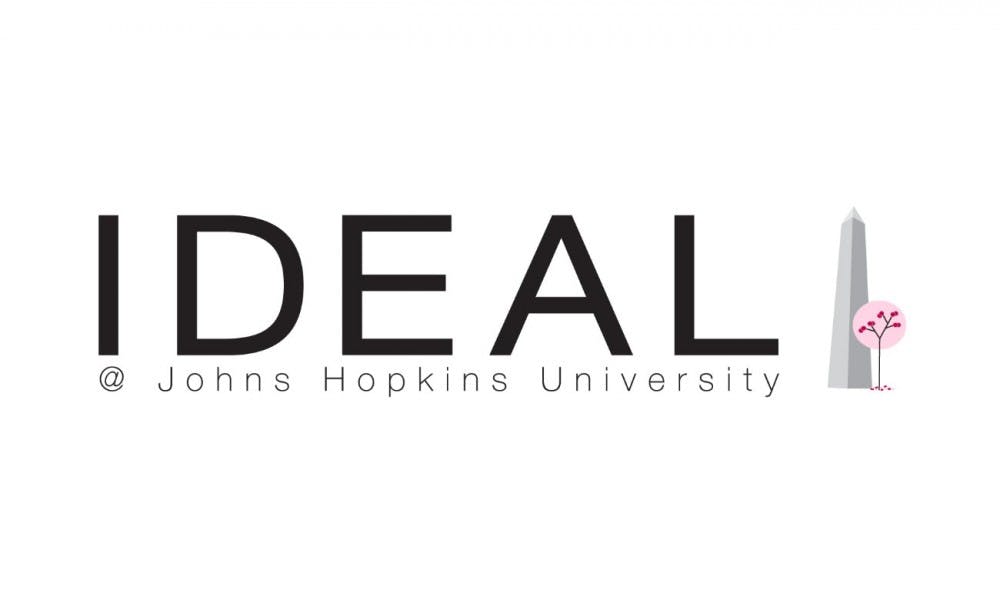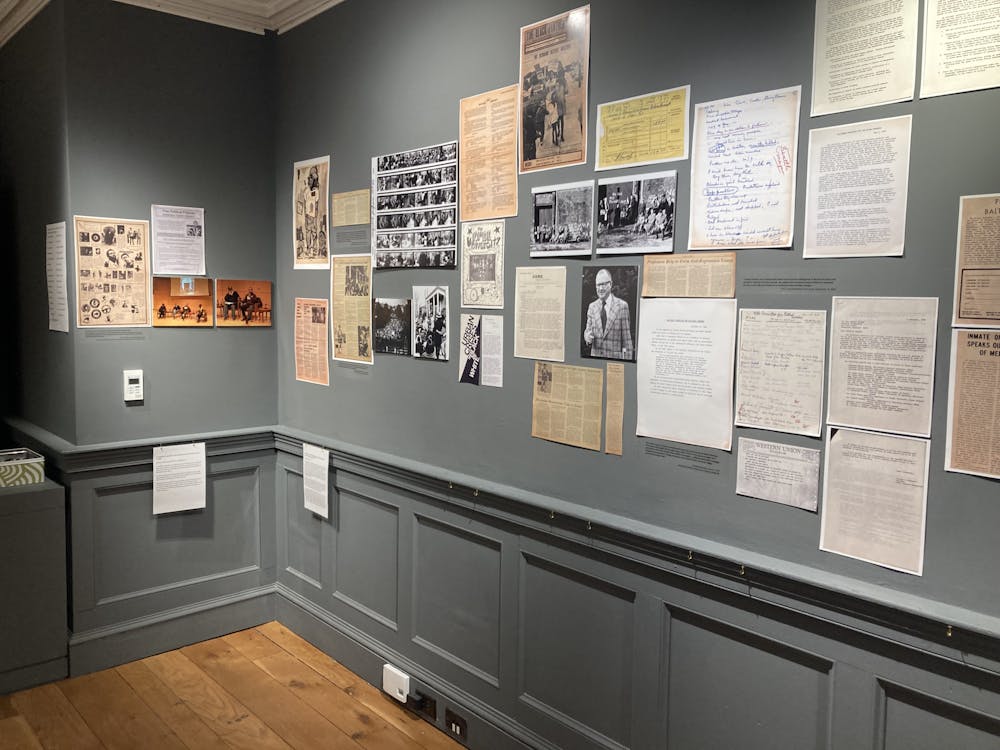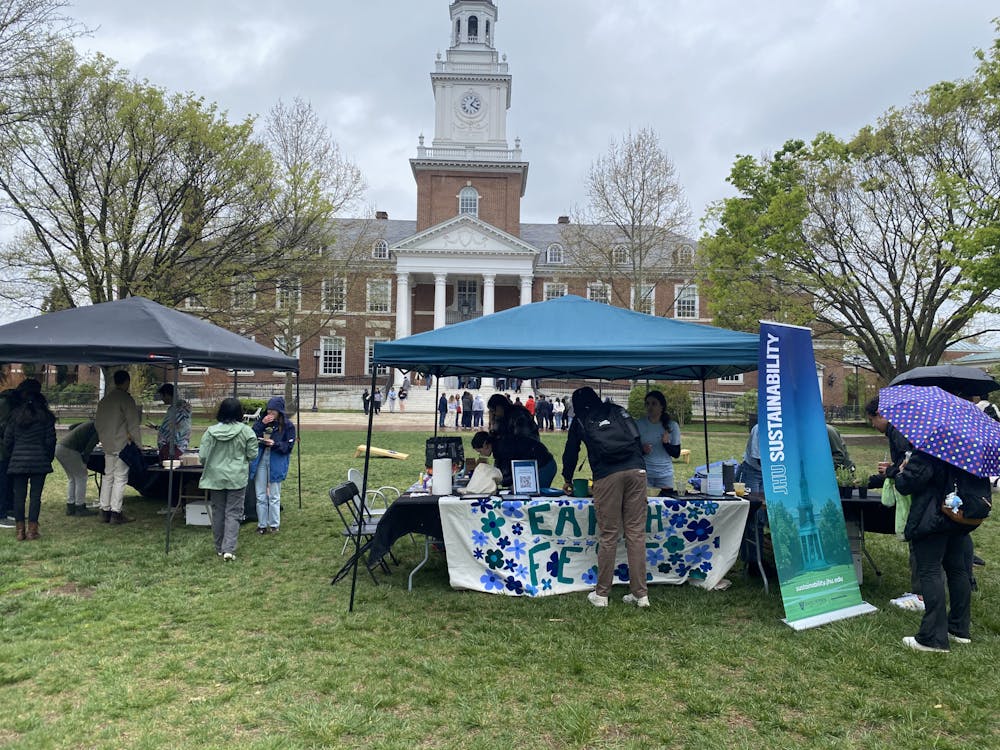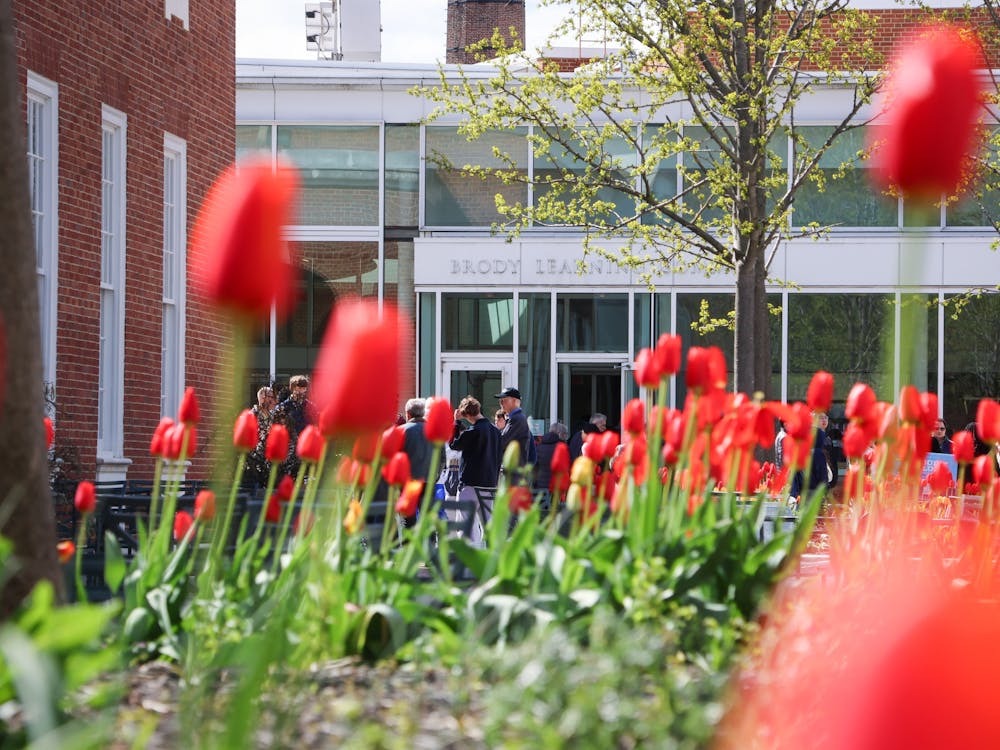Students and faculty spoke about the role of protests and free speech on college campuses at a panel on Wednesday. The event was hosted by IDEAL, a student organization that promotes both nonpartisan and bipartisan civic engagement on campus.
The panel featured Adam Sheingate, professor and chair of the Political Science department; Matthias Lalisse, a Cognitive Science PhD student; AJ Tsang, the Student Government Association (SGA) executive vice president; and Jake LaRochelle, a member of the marketing team for the Milton S. Eisenhower (MSE) Symposium.
Sophomore Divya Baron, director of education for IDEAL, moderated the panel. In her opening remarks, she explained that IDEAL decided to host the panel in response to the increasing number of students participating in protests in recent years.
“The role that students have played in protests has been significant, acting both as champions of these causes on their own campuses and participating in national events,” Baron said.
She believes the University’s close proximity to Washington, D.C. is one of the reasons why there may be an increase in student activism. Many Hopkins students have attended large national protests like: the 2017 and 2018 Women’s Marches, in which thousands gathered to advocate for women’s rights; and the 2018 March for Our Lives, a student-led demonstration calling for stricter gun control measures.
Although the University provided buses to the March for Our Lives and SGA encouraged students to attend the March, Tsang thinks that the Hopkins administration does not encourage students to protest in a similar manner on campus.
He believes that the University’s suggested guidelines for free expression show how Hopkins does not support protests on campus.
The guidelines, which were revised in January, outline the University’s support for free speech and offer resources to those who are planning protests. However, many student activists felt that the guidelines restricted their ability to protest.
“The administration wrote them out of fear,” Tsang said. “They were afraid of disruption and challenges to the status quo here at Hopkins.”
Sheingate also believes that freedom to protest is an important part of American culture.
“Collective action should be protected in a liberal democracy, and that’s why we should be vigilant of restrictions of those kinds of activities,” he said. “That’s not to say that the line is always clear.”
These guidelines restrict certain aspects of student protests, including the suggestion that students should reserve spaces in advance where protests would be held. This limits the ability to organize a protest for many students, as only registered organizations at the University can reserve spaces on campus.
Many students believed that these guidelines violated their freedom of expression, and Tsang said the early versions of the guidelines were created by Hopkins lawyers and did not consult with students.
The panelists discussed the presence of student-organized protests on campus, including the 2016 fight to save the Humanities Center at Hopkins. After conducting multiple department reviews, the University considered closing the Humanities Center, upsetting many graduate students and faculty members. Lalisse was an organizer among students who were committed to keeping the department open.
“Essentially what was planned to happen was that a neutral committee made up of three faculty members was going to evaluate the department and make a recommendation on the department’s closure,” he said.
The graduate students involved in the “Hands Off the Humanities” campaign held several protests and rallies during fall 2016. They printed flyers and held rallies that were well-attended, according to Lalisse, showing the level of student support for the cause.
Ultimately, the University did not shut down this program but instead renamed it the Department of Comparative Thought and Literature. Lalisse stressed the importance of student protests on campus.
“Protests are the sort of tool you use when you don’t have power and need to build it,” he said. “It’s important to pair them with some sort of vision on how you’re going to turn it into some sort of sustained activism.”
Other panelists, like Tsang, agreed with Lalisse, claiming that these sustained protests are most likely to affect change.
“The two biggest goals of a protest should be sustainable advocacy and having a seat at the table in terms of implementing policy change to actually effectuate a difference on what the protest is going for,” he said.
Panelists discussed other Hopkins-related protests, including the ones that have occurred at speaker events on campus.
LaRochelle discussed protests that have occurred at MSE Symposium events. He said that MSE Symposium strives to bring in speakers from both sides of political spectra to represent different perspectives on campus. LaRochelle explained that if the organization brings in a far-right speaker, they also bring in a far-left speaker to diversify content available to students.
One notable protest held at an MSE Symposium event was when Ohio Governor John Kasich spoke on campus in November 2017. Students handed out flyers before the talk with information on some of Kasich’s previous statements regarding women’s rights. Protesters specifically criticized Kasich’s support for limiting women’s reproductive rights.
“This was very effective because after listening to him, the first thing [protesters] asked Kasich was about his record on these issues,” LaRochelle said.
LaRochelle said that this form of protest is more effective than a march because students might not hear what the protesters are fighting against. He believes that by giving out information directly to students, they gained a deeper understanding as to the protesters’ cause.
Sheingate argued that there are some instances, however, where a passive form of protest is not as effective.
“There is an element of protest which is designed, and is effective, because it is disruptive,” he said. “An iconic form of protest we can think about is the marches around the Civil Rights Movement in the 1960s.”
He said that the reason these protests were so disruptive and subversive was because they directly challenged established Jim Crow laws, which perpetuated discrimination against African Americans.
“The force of nonviolent protest was that it directly confronted the control of space under Jim Crow,” Sheingate said.
He said that the effects of many student protests held on campus do not have the same level of effectiveness because they are not directly confronting authority in the same way.
Panelists also discussed the role that technology plays in organizing protests. LaRochelle believes that social media can help protest efforts by advertising them to a wider audience.
“You are able to make an event on Facebook and find people who otherwise would not have known about your protest,” LaRochelle said. “It is definitely useful as a recruitment tool.”
Liam Haviv, founder of the Hopkins chapter of IDEAL, asked the panelists about their thoughts on how the use of social media could individualize the purpose of a protest.
Tsang believes that social media is beneficial to protest organizers because it makes their causes accessible to a wider range of people
“The main effect of social media is to enfranchise and empower,” he said. “Especially in comparison to previous decades where media was controlled by a few conglomerates, now everyone has a chance to have a voice.”
Freshman Rachel Juieng, a member of the activist organization Students for a Democratic Society (SDS), thought that this event was important because of her own interest in student activism.
“Having been involved with multiple protests on campus, it is really important to hear different views from professors and graduate students,” she said.
Other students, including freshman Irfan Jamil, said that this event was intriguing because of its relevance to the current political climate.
“It was a very good discussion about protests in the 21st century,” he said. “Especially as a college student living on campus, it’s important to learn the most effective forms of protests and when they are too disruptive.”
















Please note All comments are eligible for publication in The News-Letter.